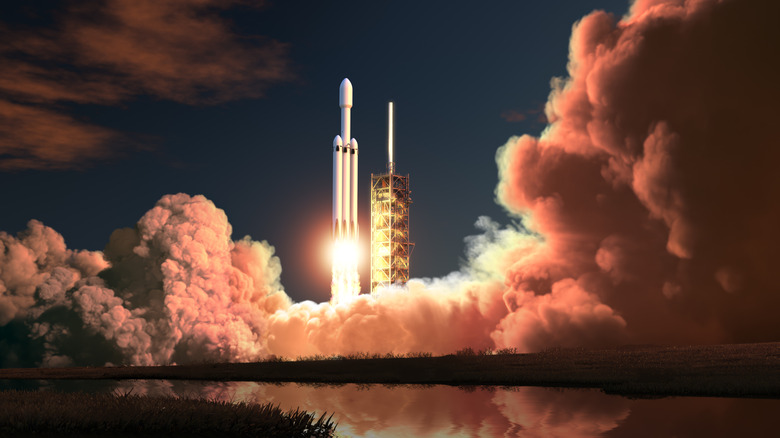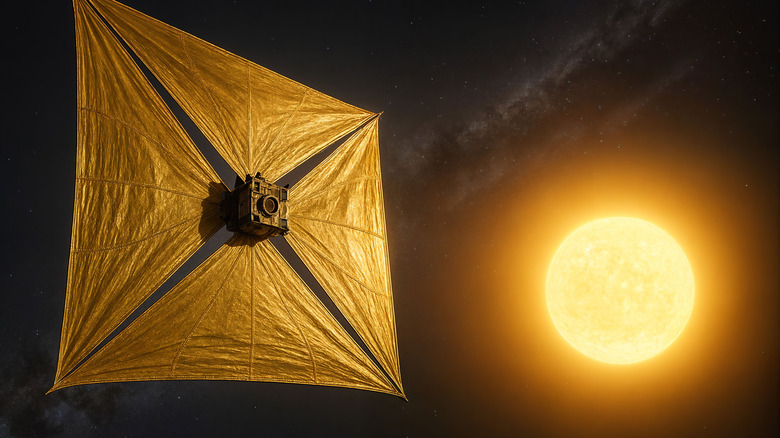Ex-NASA Engineer Claims He Conquered Gravity. Here's Why We're Skeptical
Science asks us to dream big. From the discovery of electricity to the advent of space travel, the internet, and AI, generations of visionaries have brought humanity into the modern world. Just look around today — we can do things that people a century ago would have thought utterly impossible.
That's why it's fair to keep an open mind when someone comes along claiming to have made a discovery that would change the world, even if it goes against everything we thought we knew about the nature of the universe. In April 2024, The Debrief published an article that offered a bold claim: That a "NASA veteran's propellantless propulsion drive that physics says shouldn't work just produced enough thrust to overcome the Earth's gravity." It may not spark the imagination in the same way as teleportation or time travel, but the concept of propellantless propulsion — sometimes defined as anti-gravity — is just as grand and fantastical, with the same world-changing potential. But as the beloved scientist Carl Sagan used to say, "Extraordinary claims require extraordinary evidence," and thus far, it seems that propellantless propulsion ought to be treated with a healthy dose of skepticism.
The dream of propellantless propulsion
Propellantless propulsion is the dream of scientists and engineers envisioning new ways to overcome the current limitations of space travel. Thus far, space travel has relied on rocketry, which uses vast amounts of fuel-emitting force and mass that propels the projectile into space. But experts have theorized that other possibilities might exist — it's just that thus far, we've lacked the technology to harness them.
The claims laid out in The Debrief come from Dr. Charles Buhler, a NASA engineer whose projects include the Space Shuttle, the International Space Station, and the Hubble Telescope. He is also the co-founder of Exodus Propulsion Technologies, an independent company focused on propellantless propulsion. And Buhler claimed that Exodus made a jaw-dropping breakthrough.
According to Buhler, they have uncovered a previously unknown force operating in the universe, which, he says, has allowed them to create thrust without propellant in a specially made vacuum chamber. The breakthrough is the result of years of research and experimentation, and Buhler believes the time is right to say a new era of propellantless propulsion has arrived — and people need to know about it. "The most important message to convey to the public is that a major discovery occurred," he told The Debrief. "This discovery of a new force is fundamental in that electric fields alone can generate a sustainable force onto an object and allow center-of-mass translation of said object without expelling mass." If true, it would open up new ways of thinking about space travel and the distances spacecraft could feasibly go.
The 'impossible' engine
Charles Buhler isn't the only expert engineer to have gone public with an apparent breakthrough in the field of propellantless propulsion in recent decades. Back in 2001, Roger Shawyer, a British engineer, claimed to have developed a machine that could produce thrust by trapping electromagnetic (EM) waves inside a chamber, earning it the name the EmDrive. "This relies on Newton's second law, where force is defined as the rate of change of momentum," read a statement from the company responsible for the experimental technology, SPR Ltd (via Popular Mechanics). "Thus an electromagnetic (EM) wave, travelling at the speed of light, has a certain momentum which it will transfer to a reflector, resulting in a tiny force."
News of the EmDrive landed with a splash within the scientific community, but the fact is if the machine actually worked, it would rewrite everything we know about the physical world and the forces at work in the universe. The conservation of momentum is a fundamental principle of physics based on the observations of the 17th-century British scientist Sir Isaac Newton. Specifically, it states that momentum is never created nor destroyed but remains constant within an enclosed system, only affected when an external force is applied. The EmDrive would violate this principle and upend physics as we know it. Since its unveiling, the device has been subject to many rounds of testing and experimentation. In 2021, scientists officially declared that the claims made about it were untrue, and after being tested thoroughly, it had failed to create thrust without propellant.
Other experiments with propulsion continue
Despite the EmDrive serving as something of a cautionary tale, Charles Buhler remains convinced of his new creation's efficacy. In fact, he believes it is on course to change the world by unlocking the new force to provide humanity with propellantless propulsion. "There are rules that include conservation of energy, but if done correctly, one can generate forces unlike anything humankind has done before," he told The Debrief. "It will be this force that we will use to propel objects for the next 1,000 years ... until the next thing comes."
The wider scientific community remains skeptical, but the fact is some of the world's most respected scientific institutions are conducting a great deal of research into alternative propulsion technologies. NASA itself was responsible for creating a prototype of the EmDrive, with leaks to the public occasionally revealing tantalizing details of their experiments with the device. Research is also underway to create theoretically super-efficient "ion engines" to maximize propulsion, as well as visionary forms of space travel such as "solar sails," which propel craft by exploiting pressure from photons released by the sun.


